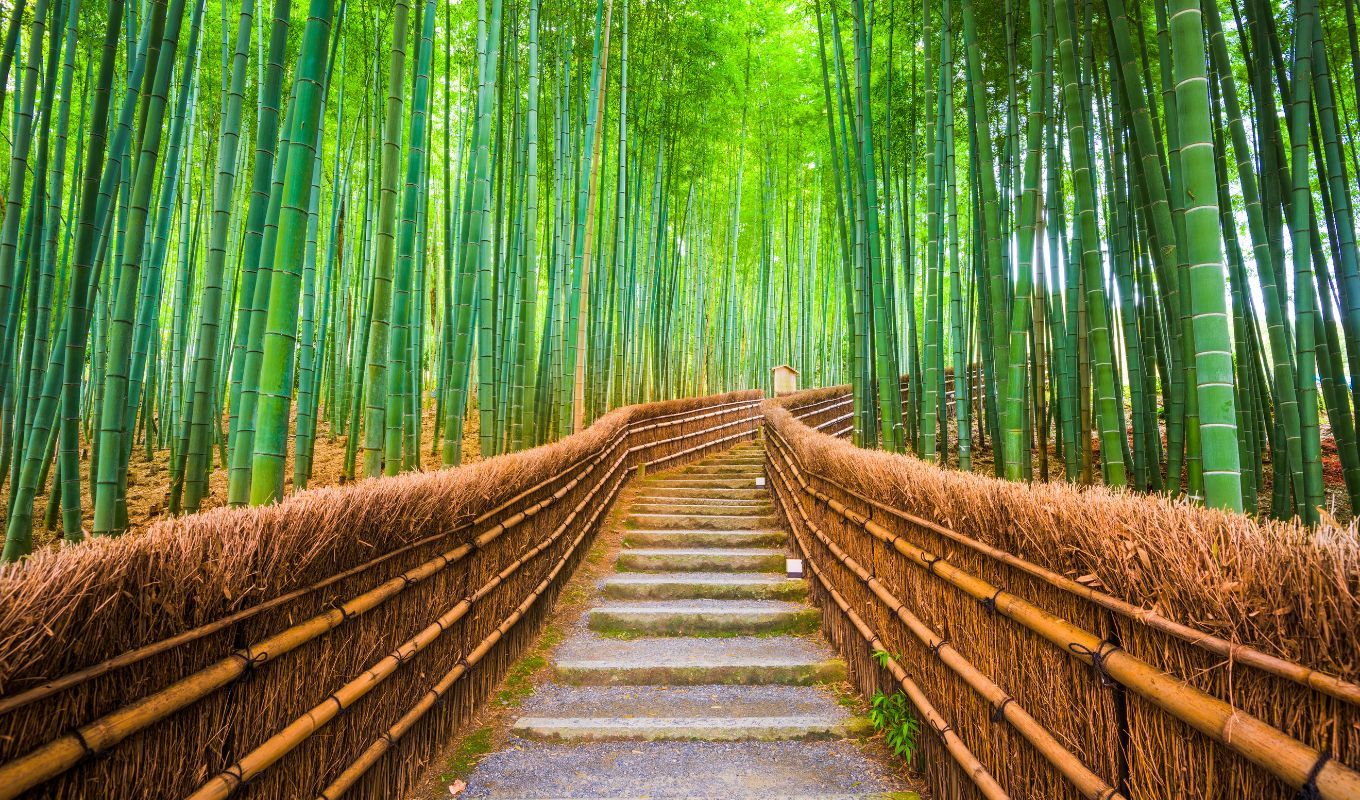Planning a trip to Kyoto, Japan, but not sure where to start? Then You have found your perfect in-depth Kyoto travel guide. Bursting at its seams, this guide covers everything you need to know about visiting Kyoto, from the best temples and shrines to the top hotels and accommodations and the best travel passes and ways to get around.
You’ll find detailed itineraries for exploring each of Kyoto’s fascinating districts, as well as tips and tricks for navigating the city like a local. Plus, with up-to-date information on the latest attractions and events, you’ll never run out of things to see and do.

So why wait? Start planning your dream trip to Kyoto today with this comprehensive travel guide. With all the information you need right at your fingertips, you’re sure to have an unforgettable experience in one of Japan’s most beautiful and historic cities.
Getting to Kyoto

Kyoto is a popular tourist destination in Japan, known for its rich cultural heritage and beautiful temples. There are several ways to get to Kyoto, depending on your location and preferences.
By Air
The nearest airport to Kyoto is Kansai International Airport (KIX), located about 100 km away. From KIX, you can take a direct train to Kyoto station, which takes approximately 75 minutes. Alternatively, you can take a bus or taxi to Kyoto, which will take longer but may be more convenient depending on your destination.
By Train
Kyoto is well-connected to other major cities in Japan by train. The Shinkansen (bullet train) is the fastest and most convenient way to travel to Kyoto from Tokyo, Osaka, and other major cities. The journey from Tokyo to Kyoto takes approximately 2.5 hours along the Tokaido line on the fastest train, while the journey from Osaka to Kyoto takes only 15-30 minutes.
By Bus
There are several bus companies that operate between Kyoto and other major cities in Japan. Buses are generally slower and less comfortable than trains, but they can be a cheaper option. Some popular bus companies include Willer Express, JR Bus, and Kintetsu Bus.
Best Time to Visit Kyoto

When planning a trip to Kyoto, it’s important to consider the best time to visit. The city has a humid subtropical climate, with hot and humid summers and cool winters. The best time to visit Kyoto is during the spring (March to May) and autumn (September to November) seasons. These seasons offer comfortable temperatures, beautiful scenery, and a variety of events and festivals.
During the spring season, Kyoto’s cherry blossom trees are in full bloom, creating a picturesque landscape. The temperatures are mild, ranging from 10°C to 20°C, making it perfect for outdoor activities such as hiking, cycling, and sightseeing. However, it’s important to note that this is also the busiest time of the year, with crowds of travelers and higher prices for accommodations.
The autumn season is another great time to visit Kyoto. The city’s foliage turns into beautiful shades of red, orange, and yellow, creating stunning scenery. The temperatures are similar to the spring season, ranging from 10°C to 20°C. This season is also less crowded than spring, making it a great option for those who want to avoid crowds.
That the summer season (June to August) in Kyoto can be hot and humid, with temperatures reaching up to 35°C. This can make outdoor activities uncomfortable, and it’s important to stay hydrated and wear appropriate clothing. The winter season (December to February) can be cold, with temperatures ranging from 0°C to 10°C. However, this season offers a unique experience, with beautiful snow-covered landscapes and winter festivals.
The best time to visit Kyoto is during the spring and autumn seasons for most people. We personally enjoy visiting in early December when the crowds are less but the weather is still mild.
Where to Stay in Kyoto

Kyoto offers Japan’s most diverse range of accommodations for travelers, from traditional ryokans to modern hotels. Here are some of the best areas to stay in Kyoto:
Downtown Area
The downtown area is a great choice for those who want to be in the heart of the city. It is home to many restaurants, shops, and entertainment options. Some popular neighborhoods in the downtown area include Gion, Pontocho, and Kawaramachi. There are many hotels and guesthouses in this area, ranging from budget-friendly to luxury.
Kyoto Station Area
The Kyoto Station area is a convenient location for those who want to be close to transportation options. The area is home to the city’s main train station, which serves as a hub for trains, buses, and subways. There are many hotels and guesthouses in this area, ranging from budget-friendly to luxury.
Gion
Gion is a historic neighborhood in Kyoto, known for its traditional architecture and geisha culture. Staying in Gion is a great way to experience the traditional side of Kyoto. There are many ryokans and guesthouses in this area, offering a unique and authentic experience.
Central Kyoto
The central Kyoto area is an excellent choice for those who want to be close to the city’s main attractions. It is home to many temples, shrines, and museums, as well as shopping and dining options. There are many hotels and guesthouses in this area, ranging from budget-friendly to luxury.
Northern Higashiyama
The Northern Higashiyama area is a great choice for those who want to be close to Kyoto’s famous temples and shrines. It is home to many historic sites, including Kiyomizu-Dera Temple and Ginkaku-ji Temple. There are many ryokans and guesthouses in this area, offering a traditional and authentic experience.
Arashiyama
The Arashiyama area is a great choice for those who want to be close to nature. It is home to the famous bamboo forest and many hiking trails. There are many ryokans and guesthouses in this area, offering a peaceful and relaxing experience.
Getting Around Kyoto
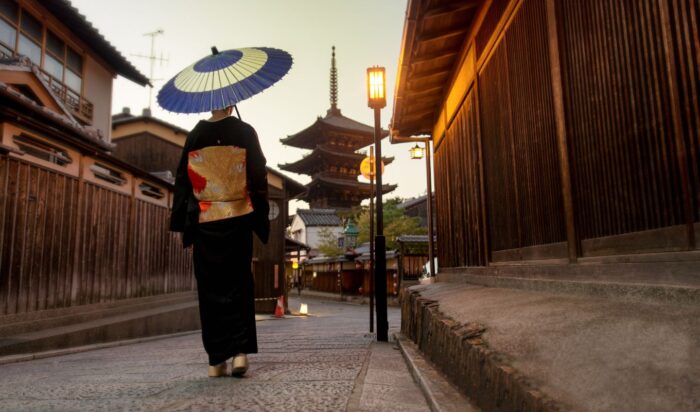
Getting around Kyoto is relatively easy and convenient, with several modes of transportation available. The city has an extensive public transportation network that includes buses, subways, and trains. Taxis are also readily available but can be expensive, especially during peak hours.
The most convenient and affordable way to get around Kyoto is by using the city’s bus system. Kyoto’s buses cover most of the city’s major attractions, making the routes easy to navigate. The buses are color-coded, and the bus stops have route maps and timetables in English. The fare for a single ride is 230 yen, and a day pass is available for 600 yen, which allows unlimited rides on city buses.
Another convenient option for getting around Kyoto is by using the subway. The city has two subway lines, the Karasuma Line and the Tozai Line, which connect most of the major attractions in the city. The subway is also an affordable option, with a single ride costing between 210 and 260 yen, depending on the distance traveled.
For those who prefer to travel by train, Kyoto has several railway stations, including Kyoto Station, which is the city’s main transportation hub. From Kyoto Station, visitors can take the JR Sagano Line to Arashiyama, the Kintetsu Line to Nara, and the Tokaido Shinkansen to Tokyo and Osaka.
Finally, for those who prefer the convenience of a taxi, they are readily available throughout the city. However, they can be expensive, especially during peak hours. Taxis in Kyoto are metered, and the fare starts at 660 yen for the first two kilometers, with an additional 80 yen for every 300 meters thereafter.
Top Things to Do in Kyoto
Kyoto is a city with a rich cultural heritage and a stack of attractions to explore. Here are some of the top things to do in Kyoto:
Visit the Fushimi Inari Shrine
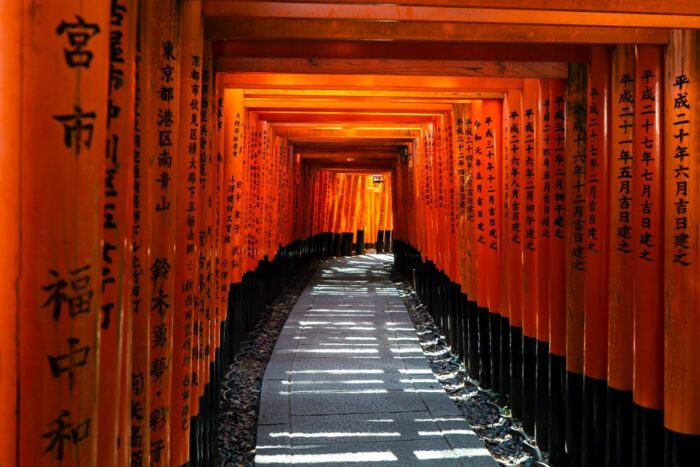
The Fushimi Inari Shrine is one of the most iconic landmarks in Kyoto. It is famous for its thousands of torii gates that create a mesmerizing path through the forest. Visitors can hike up the mountain to see stunning views of the city and experience the peaceful atmosphere of the shrine. The shrine is open 24 hours a day and admission is free.
Explore the Kinkaku-ji Temple

The Kinkaku-ji Temple, also known as the Golden Pavilion, is a UNESCO World Heritage Site and one of the most popular tourist attractions in Kyoto. Its stunning golden exterior and serene gardens make it a must-visit destination. Visitors can stroll through the gardens, admire the reflection of the temple in the pond, and learn about its fascinating history. It is open from 9:00 am to 5:00 pm and admission costs 400 yen.
Take a Stroll through the Arashiyama Bamboo Grove
The Arashiyama Bamboo Grove is a peaceful and picturesque destination that is perfect for nature lovers. The towering bamboo stalks create a serene atmosphere that is perfect for a relaxing stroll. Visitors can also explore the nearby temples and shrines, such as the Tenryu-ji Temple and the Gio-ji Temple. The bamboo grove is open 24 hours a day and admission is free.
Experience the Gion District
The Gion District is a charming and historic neighborhood that is famous for its traditional architecture and geisha culture. Visitors can stroll through the narrow streets, admire the old wooden buildings, and try some of the local delicacies. The district is also home to several teahouses where visitors can watch a geisha performance. The district is best explored in the evening.
Visit the Nijo Castle
The Nijo Castle is a stunning example of traditional Japanese architecture and a UNESCO World Heritage Site. Visitors can explore the castle’s beautiful gardens, admire the intricate woodwork, and learn about its fascinating history. The castle is open from 8:45 am to 5:00 pm and admission costs 1,000 yen.
Kyoto’s Temples and Shrines

Kyoto is known for its rich cultural heritage and is home to over 2,000 temples and shrines. These temples and shrines are not only religious sites but also important cultural landmarks that attract millions of visitors every year. Here are some of the most popular temples and shrines to visit in Kyoto:
Kiyomizu-dera Temple
The unmatched Kiyomizu-Dera Temple is one of the most famous temples in Kyoto and is a designated UNESCO World Heritage Site. The temple is known for its stunning architecture and beautiful views of the city. Don’t forget to drink from the Otowa Waterfall, which is said to grant wishes.
Fushimi Inari-Taisha Shrine
Fushimi Inari-Taisha Shrine is famous for its thousands of torii gates that lead up to the top of Mount Inari. The shrine is dedicated to Inari, the god of rice, and visitors can see many fox statues around the shrine, which are believed to be Inari’s messengers.
Ginkaku-ji Temple
The peaceful Ginkaku-ji Temple, also known as the Silver Pavilion, is a Zen temple located in the eastern part of Kyoto. The temple is famous for its beautiful gardens and the Silver Pavilion, which was originally intended to be covered in silver but was never completed.
Kinkaku-ji Temple
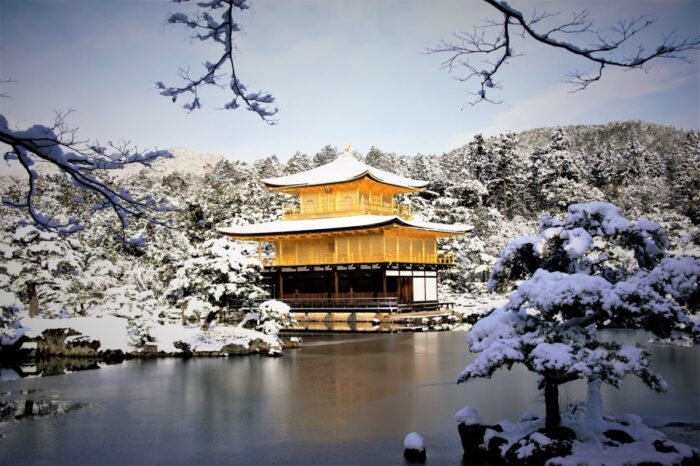
The world-famous and undeniably stunning Kinkaku-ji Temple, also known as the Golden Pavilion, is a Zen temple located in northern Kyoto. The temple is famous for its stunning architecture and beautiful gardens. The top two floors of the temple are covered in gold leaf, which gives the temple its name.
Ryoan-ji Temple
Ryoan-ji Temple is a Zen temple located in northwest Kyoto. The temple is famous for its rock garden, which is considered to be one of the finest examples of Japanese Zen gardens. The garden consists of 15 rocks arranged in a pattern on a bed of white gravel.
Visiting Kyoto’s temples and shrines is a must-do activity for anyone visiting the city. These cultural landmarks offer a glimpse into Japan’s rich history and provide a peaceful escape from the hustle and bustle of the city. Make sure to visit some of the most popular temples and shrines, such as Kiyomizu-Dera Temple, Fushimi Inari-Taisha Shrine, Ginkaku-ji Temple, Kinkaku-ji Temple, and Ryoan-ji Temple, to truly experience the beauty and serenity of Kyoto.
Kyoto’s Gardens and Parks

Kyoto is known for its beautiful gardens and parks, which are a must-visit for anyone traveling to the city. These green spaces offer a peaceful escape from the hustle and bustle of the city and are perfect for a relaxing stroll or a picnic with friends and family.
One of the most famous gardens in Kyoto is the Kinkaku-ji Temple Garden, also known as the Golden Pavilion. This garden is located in the temple complex and features a stunning golden pavilion set against a backdrop of lush greenery and a tranquil pond. Visitors can stroll around the garden, admiring the intricate details of the temple and taking in the serene atmosphere.
Another popular garden in Kyoto is the Arashiyama Bamboo Grove, which is located on the outskirts of the city. This bamboo forest is a striking sight, with towering bamboo stalks creating a natural canopy overhead. Here you can walk through the forest, taking in the peaceful sounds of the rustling leaves and admiring the unique beauty of this natural wonder.
For those who love cherry blossoms, the Philosopher’s Path is a must-visit. This 2-kilometer-long path is lined with hundreds of cherry trees that bloom in the spring, creating a stunning pink canopy overhead. We love to come here and walk along the path, taking in the beauty of the cherry blossoms and the surrounding scenery.
Other great gardens and parks in Kyoto include the Nijo Castle Garden, the Imperial Palace Park, and the Kyoto Botanical Gardens. Each of these green spaces offers its own unique charm and beauty, making them worth a visit for anyone traveling to Kyoto.
Overall, Kyoto’s gardens and parks are a must-visit for anyone traveling to the city. From the tranquil beauty of Kinkaku-ji Temple Garden to the striking bamboo forest of Arashiyama, these green spaces offer a peaceful escape from the city and a chance to connect with nature and Japanese culture.
Kyoto’s Museums and Galleries
Kyoto is home to some of the most fascinating museums and galleries in Japan. Visitors to the city can enjoy the rich cultural history of Japan, explore contemporary art, and learn about the city’s unique traditions and customs. Here are some of the must-visit museums and galleries in Kyoto:
Kyoto National Museum
The Kyoto National Museum is one of the most important museums in Japan, with a vast collection of art and artifacts from Japan and other parts of Asia. The museum’s permanent collection includes over 12,000 items, including ceramics, textiles, paintings, and sculptures. The museum also hosts temporary exhibitions throughout the year, showcasing a range of art and cultural artifacts.
Museum of Kyoto
The Museum of Kyoto is a great place to learn about the history and culture of Kyoto. The museum’s permanent collection includes a range of artifacts, from ancient pottery to modern art.
Kyoto International Manga Museum
The Kyoto International Manga Museum is a must-visit for manga fans. The museum has an extensive collection of manga, including rare and out-of-print titles. Learn about the history of manga and its cultural significance in Japan. The museum also hosts special exhibitions throughout the year, showcasing the work of different manga artists.
Kyoto City Kyocera Museum of Art
The Kyoto City Kyocera Museum of Art is a great place to see contemporary art. The museum’s permanent collection includes works by Japanese and international artists, including paintings, sculptures, and installations. The museum also hosts temporary exhibitions throughout the year, showcasing a range of contemporary art.
These are just a few of the many museums and galleries that Kyoto has to offer. With so much art to see and a fascinating mix of traditional Japanese art and culture or contemporary art and design Kyoto is an art lovers wonderland
Kyoto’s Food Scene

Kyoto’s food scene is a must-try for any foodie visiting Japan. The city offers a variety of traditional Japanese dishes, as well as fusion cuisine that blends Japanese and Western flavors. Here are some of the must-try dishes in Kyoto:
- Kaiseki: This is a traditional multi-course Japanese meal that typically includes a variety of dishes such as sashimi, grilled fish, tempura, and rice. Kaiseki is often served in high-end restaurants and ryokans (traditional inns).
- Yudofu: This is a simple and healthy dish made of boiled tofu served with dipping sauce. It’s a popular winter dish in Kyoto and can be found in many restaurants and street vendors.
- Okonomiyaki: This is a savory pancake made with cabbage, meat or seafood, and topped with sauce, mayonnaise, and bonito flakes. It’s a popular street food in Kyoto.
- Kyoto-style sushi: This is a type of sushi that uses vinegar rice and toppings such as shrimp, eel, and pickled vegetables. It’s often served in sushi restaurants and can be found in the Nishiki Market.
Along With these traditional dishes, Kyoto also offers a variety of fusion cuisine that blends Japanese and Western flavors. Here are some notable restaurants to try:
| Restaurant | Cuisine | Location |
|---|---|---|
| Fujiya 1935 | French-Japanese fusion | Nakagyo Ward |
| Kyoto Saryo | Japanese tea and sweets | Higashiyama Ward |
| La Rambla | Spanish-Japanese fusion | Nakagyo Ward |
Overall, Kyoto’s food scene offers a unique and delicious culinary experience that should not be missed when visiting Japan.
Shopping in Kyoto
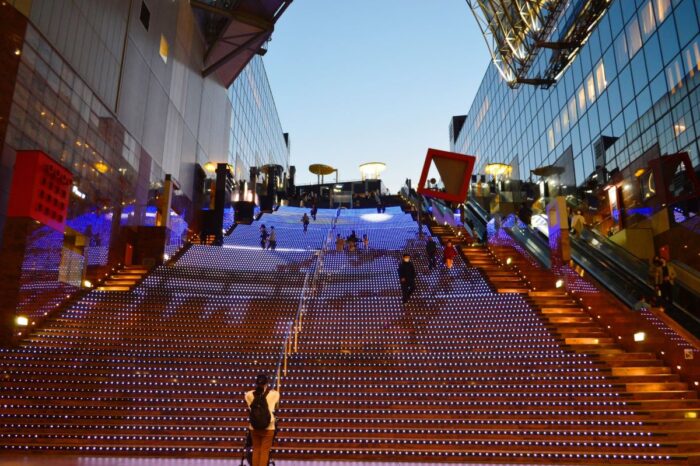
Shopping in Kyoto is a unique experience that combines traditional and modern elements. From high-end department stores to local markets, there is something for everyone. Here are some of the best shopping destinations in Kyoto:
Department Stores
Kyoto is home to several high-end department stores, including Takashimaya, Daimaru, and Isetan. These stores offer a wide range of products, from luxury fashion brands to traditional Japanese crafts. Takashimaya is particularly known for its extensive selection of tea and ceramics.
Markets

Kyoto is also home to several markets that offer a glimpse into traditional Japanese life. The Nishiki Market is a must-visit destination for foodies, with over 100 vendors selling fresh seafood, produce, and other local specialties. The Toji Temple Flea Market is another popular destination, with vendors selling everything from antiques to handmade crafts.
Specialty Shops
For those looking for unique souvenirs, Kyoto has a wealth of specialty shops. The Kiyomizu pottery district is known for its handmade ceramics, while the Teramachi shopping arcade is home to several shops selling traditional Japanese textiles. The Gion district is also a great place to find traditional Japanese crafts, such as fans and lanterns.
Overall, shopping in Kyoto is a great way to experience the city’s unique blend of tradition and modernity. Whether you’re looking for high-end fashion or traditional crafts, there is something for everyone.
Kyoto’s Nightlife
While Kyoto may be known for its temples and shrines, the city also has a vibrant nightlife scene. From bars and clubs to traditional Japanese entertainment, there is something for everyone in Kyoto after dark.
Bars and Clubs
One of the most popular areas for nightlife in Kyoto is the Gion district. Here, visitors can find a variety of bars and clubs to suit their tastes.
Traditional Japanese Entertainment
For those looking for a more traditional Japanese nightlife experience, there are several options available in Kyoto. One popular option is attending a maiko performance. Maiko are traditional Japanese entertainers who perform dances and play music while dressed in elaborate kimonos. Another option is visiting a Gion Corner, where visitors can watch a variety of traditional Japanese performances, such as tea ceremonies, flower arrangements, and puppet shows.
Food and Drink
No night out in Kyoto is complete without trying some of the city’s famous food and drink. Some popular options include:
- Izakaya Tachibana: A traditional Japanese pub serving a variety of small dishes and drinks.
- Kaiseki Cuisine: A traditional Japanese multi-course meal, often served in a traditional tatami room.
- Sake Tasting: Kyoto is known for its sake, and there are several places around the city where visitors can taste and learn about this traditional Japanese drink.
Overall, Kyoto’s nightlife scene offers a unique blend of traditional Japanese entertainment and modern bars and clubs. Whether visitors are looking for a night out on the town or a more cultural experience, there is something for everyone in Kyoto after dark.
Day Trips from Kyoto
While Kyoto is a beautiful city with plenty to see and do, there are also many great day trips you can take from the city. Here are some of the best day trips from Kyoto:
Nara
Nara is a must-visit destination for anyone traveling to Kyoto. It is a short train ride away and is home to some of the most impressive temples and shrines in Japan. One of the main attractions in Nara is the Todai-ji Temple, which houses the world’s largest bronze statue of Buddha. Visitors can also feed the friendly deer that roam freely throughout the city.
Osaka
Osaka is another great day trip option from Kyoto. Known for its delicious food, Osaka is home to some of the best street food in Japan. You can also visit Osaka Castle, which offers stunning views of the city or explore the vibrant Dotonbori neighborhood: Check out our in-depth guide on things to do in Osaka here.
Kobe
Kobe is a port city located just a short train ride from Kyoto. It is famous for its succulent Kobe beef, which is considered some of the best in the world. There are many things to do in Kobe but if you have to choose one we recommend taking a cable car up to the top of Mount Rokko for stunning views of the city and the surrounding area.
Himeji
Himeji is home to one of Japan’s most impressive castles, the Himeji Castle. The castle is a UNESCO World Heritage Site and is considered one of the best-preserved castles in Japan. Visitors can also explore the nearby Koko-en Garden, which features nine different traditional Japanese gardens.
Arashiyama
Arashiyama is a beautiful district located on the outskirts of Kyoto. It is home to the famous bamboo forest, as well as several temples and shrines. Visitors can also take a scenic boat ride down the Hozu River or visit the monkey park to see the wild monkeys that live in the area.
There are plenty of great day trips you can take from Kyoto. Whether you want to explore historic temples and shrines, indulge in delicious food, or take in stunning views of the surrounding area, there is something for everyone just a short train ride away.
The Sum Up
Visiting Kyoto is an experience like no other. From the ancient temples and shrines to the bustling city streets, there is something for everyone in this amazing city. With so much to see and do, it can be overwhelming to plan your trip, but with the right resources and information, you can make the most of your time in Kyoto.
Throughout this guide, we have covered everything you need to know about visiting Kyoto. We have explored the city’s history, culture, and cuisine, and provided detailed information on the top attractions and activities. We have also provided practical tips on transportation, accommodations, and budgeting, to help you plan your trip with ease.
One thing to keep in mind when visiting Kyoto is that it is a popular tourist destination, especially during peak seasons. To avoid crowds and long lines, consider visiting during the off-season or early in the morning before the crowds arrive. Plus, be respectful of the local customs and traditions, especially when visiting temples and shrines.
Overall, Kyoto is a must-visit destination for anyone interested in Japanese culture and history. With its stunning architecture, delicious food, and friendly people, it is sure to leave a lasting impression on any traveler. So start planning your trip to Kyoto today, and get ready for an unforgettable adventure!

